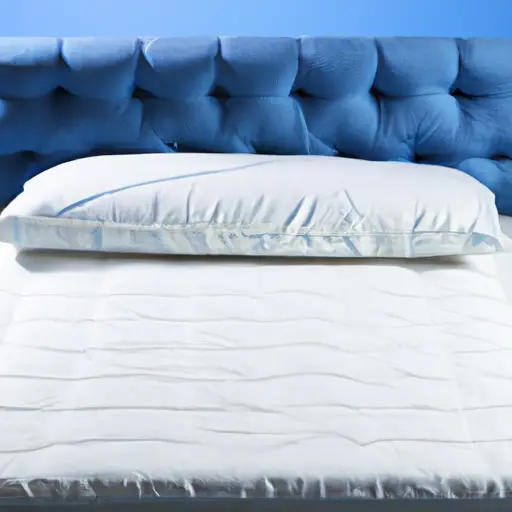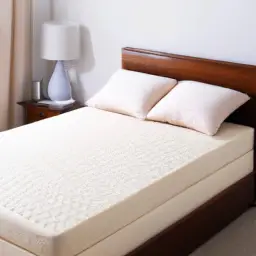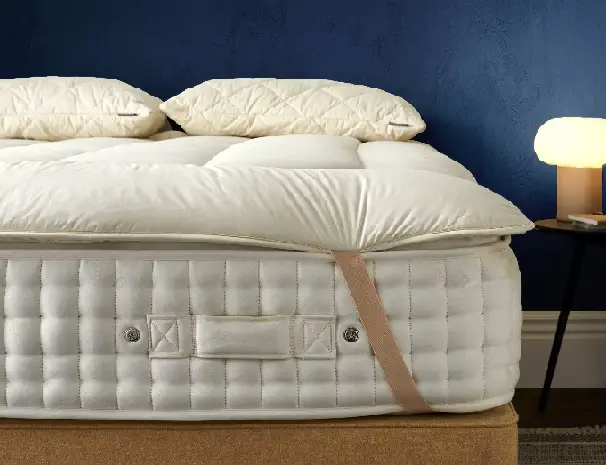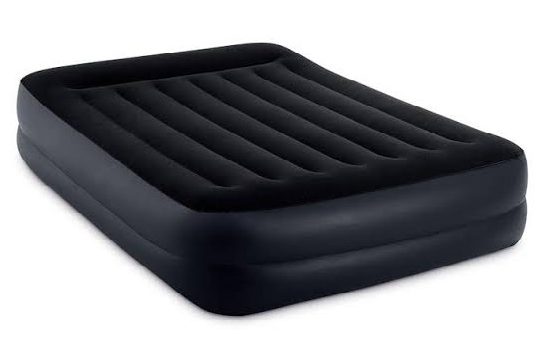Are you struggling to decide between a pillow top and a traditional mattress? Look no further, because we’ve got the answers you’re looking for! In this article, we will explore the pros and cons of both types of mattresses, helping you make an informed decision that suits your personal sleep preferences. Whether you desire luxurious plushness or the tried-and-true comfort of a traditional mattress, we’ve got all the information you need to ensure a good night’s sleep. So, sit back, relax, and let’s find the perfect mattress for you!
Table of Contents
What is a Pillow Top Mattress?
A pillow top mattress is a type of mattress that features an extra layer of padding on top, designed to provide additional cushioning and comfort. The pillow top layer is attached to the mattress surface, creating a plush and luxurious feel. This added layer is typically made of materials like memory foam, latex, or fiberfill, and is known for its softness and ability to conform to the body’s contours.
Definition of a Pillow Top Mattress
A pillow top mattress is defined as a mattress that has an extra layer of padding stitched to the top surface. This layer can range in thickness, but it is typically several inches thick and adds a plush, pillow-like feel to the mattress. This layer is often made of soft materials like memory foam or latex, which provide exceptional comfort and contouring.
Characteristics of a Pillow Top Mattress
One of the key characteristics of a pillow top mattress is its plush and luxurious feel. The extra layer of padding on top provides a soft and comfortable surface to sleep on. Another characteristic is the ability of the pillow top layer to contour to the body’s shape, providing targeted pressure relief and personalized support. Pillow top mattresses also tend to have a greater overall thickness compared to traditional mattresses, further enhancing their plushness.
Pros of a Pillow Top Mattress
There are several advantages to choosing a pillow top mattress. Firstly, the extra layer of padding offers exceptional comfort, making it ideal for those who prefer a softer sleeping surface. The pillow top layer also helps to alleviate pressure points, reducing the chances of waking up with aches and pains. Additionally, pillow top mattresses are often more visually appealing, with their plush appearance adding a touch of luxury to any bedroom.
Cons of a Pillow Top Mattress
While pillow top mattresses offer many benefits, there are a few potential drawbacks to consider. The softness of the pillow top layer may not be suitable for everyone, especially those who prefer a firmer mattress for proper support. The added cushioning can also contribute to increased heat retention, which may be uncomfortable for individuals who tend to sleep hot. Additionally, pillow top mattresses can be more expensive than traditional mattresses, which could be a limiting factor for some budget-conscious shoppers.
What is a Traditional Mattress?
A traditional mattress, also known as an innerspring mattress, is the most common and widely recognized type of mattress. It consists of a support core made up of metal coils or springs, with layers of padding and upholstery materials on top for comfort. Traditional mattresses offer a range of firmness levels and are known for their durability and support.
Definition of a Traditional Mattress
A traditional mattress is defined as a mattress that incorporates a support core consisting of metal coils or springs. These coils provide the overall structure and support of the mattress. On top of the support core, layers of padding and upholstery materials are added to enhance comfort and cushioning.
Characteristics of a Traditional Mattress
One of the key characteristics of a traditional mattress is its use of metal coils or springs in the support core. These coils provide bounce and support, and the number and thickness of the coils can vary, affecting the overall feel of the mattress. Traditional mattresses also often feature layers of foam or other materials for added comfort and support.
Pros of a Traditional Mattress
Traditional mattresses have several advantages that make them a popular choice for many sleepers. Firstly, they offer a wide range of firmness options, making it easier to find a mattress that suits individual preferences. The metal coils or springs in the support core provide excellent support and help distribute body weight evenly, preventing the development of pressure points. Additionally, traditional mattresses tend to be more affordable compared to some other mattress types, making them a budget-friendly option.
Cons of a Traditional Mattress
While traditional mattresses have many positive attributes, there are a few potential drawbacks. One common concern is that traditional mattresses may have a shorter lifespan compared to other mattress types. Over time, the metal coils can wear out or become noisy, leading to a less supportive and comfortable sleeping experience. Traditional mattresses may also have less contouring and pressure relief compared to pillow top mattresses, which may not be ideal for individuals with specific pain or pressure point requirements.
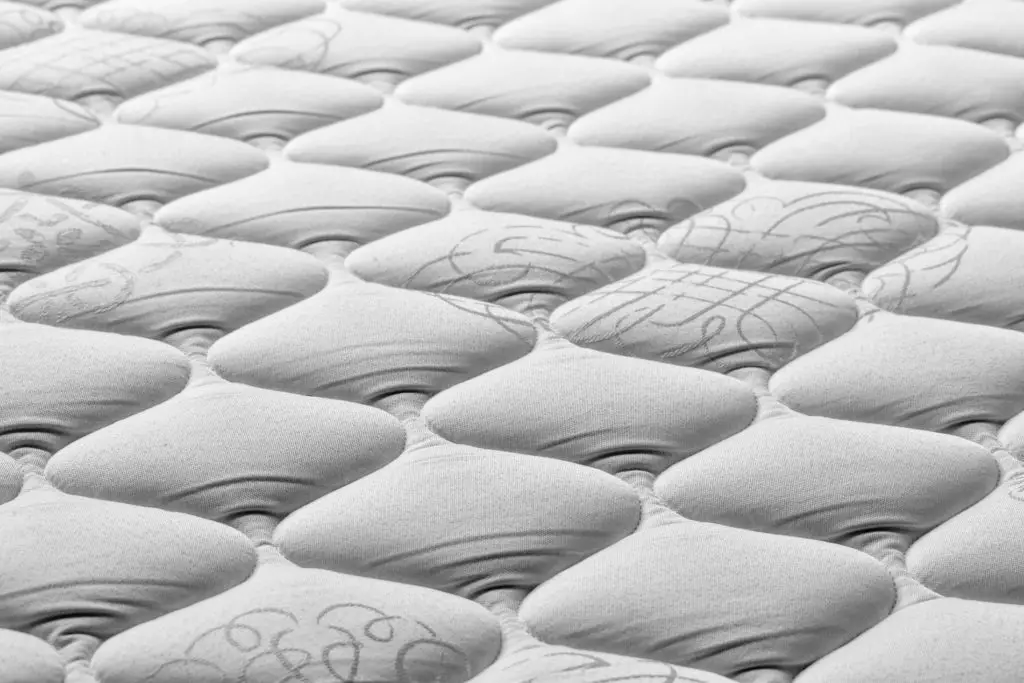
Comfort and Support
Comfort of a Pillow Top Mattress
Pillow top mattresses are highly regarded for their exceptional comfort. The added pillow top layer provides a plush surface that cradles the body and relieves pressure points. The materials used in the pillow top layer, such as memory foam or latex, offer contouring and adaptability to the body’s shape, creating a personalized and cozy sleeping experience. The softness of a pillow top mattress can be particularly appealing for those who prefer a luxurious and enveloping feel while they sleep.
Comfort of a Traditional Mattress
Traditional mattresses also offer a comfortable sleeping experience, albeit with a different feel compared to a pillow top mattress. The layers of padding and upholstery materials on top of the metal coils provide a cushioned surface that conforms to the body’s contours. The firmness level of a traditional mattress can vary depending on personal preference, with options ranging from soft to firm. This allows individuals to choose a level of comfort that suits their needs, whether they prefer a softer or more supportive feel.
Support of a Pillow Top Mattress
While pillow top mattresses excel in comfort, their supportiveness may vary depending on the specific model and construction. The pillow top layer adds a plush surface, but the underlying support core, typically made up of coils or foam, is responsible for providing the necessary support. Some pillow top mattresses may have a thicker and more supportive support core, ensuring a balance between comfort and support. However, it is important to consider individual support needs and choose a pillow top mattress that provides adequate support for proper spinal alignment.
Support of a Traditional Mattress
Traditional mattresses are built primarily with support in mind. The metal coils or springs in the support core of a traditional mattress offer a durable and responsive foundation. The coils help distribute body weight evenly, providing support to key areas such as the hips, shoulders, and back. The firmness level of a traditional mattress can further enhance its supportive properties, with firmer options offering greater resistance and support. This makes traditional mattresses a suitable choice for individuals seeking a mattress that promotes proper spinal alignment and reduces the risk of developing back pain.
Durability and Longevity
Durability of a Pillow Top Mattress
The durability of a pillow top mattress can vary depending on factors such as the quality of materials used and the construction techniques employed. While the pillow top layer itself may be prone to some compression and wear over time, the overall lifespan of a pillow top mattress can be extended with proper care and maintenance. Look for a pillow top mattress with high-density foams or durable materials in the support core to enhance its durability. Additionally, choosing a reputable brand known for excellent craftsmanship and quality can also contribute to a longer-lasting pillow top mattress.
Durability of a Traditional Mattress
Traditional mattresses, particularly those with high-quality construction, are generally known for their durability. The metal coils or springs used in the support core are designed to withstand regular use and maintain their shape over time. However, it is important to note that the longevity of a traditional mattress can be influenced by factors such as coil gauge, coil count, and the quality of other materials used. Opting for a traditional mattress from a trusted and well-established brand can help ensure better durability and a longer lifespan.
Longevity of a Pillow Top Mattress
The longevity of a pillow top mattress can be dependent on various factors, including usage, care, and the quality of materials used. The pillow top layer may experience some compression and loss of resilience over time, especially with consistent use. However, investing in a high-quality pillow top mattress with durable materials and proper construction can help prolong its lifespan. Additionally, rotating the mattress regularly and using a mattress protector can also contribute to maintaining its integrity and extending its longevity.
Longevity of a Traditional Mattress
Traditional mattresses are generally known for their longevity, particularly when chosen from reputable brands and constructed with high-quality materials. The metal coils or springs used in the support core can offer excellent durability and resilience, withstanding the test of time. However, it is important to note that over a long period of use, the coils may gradually lose their shape and resilience, leading to a decrease in support and comfort. Proper care, such as rotating the mattress regularly and using a mattress protector, can help maintain the integrity of a traditional mattress and prolong its lifespan.
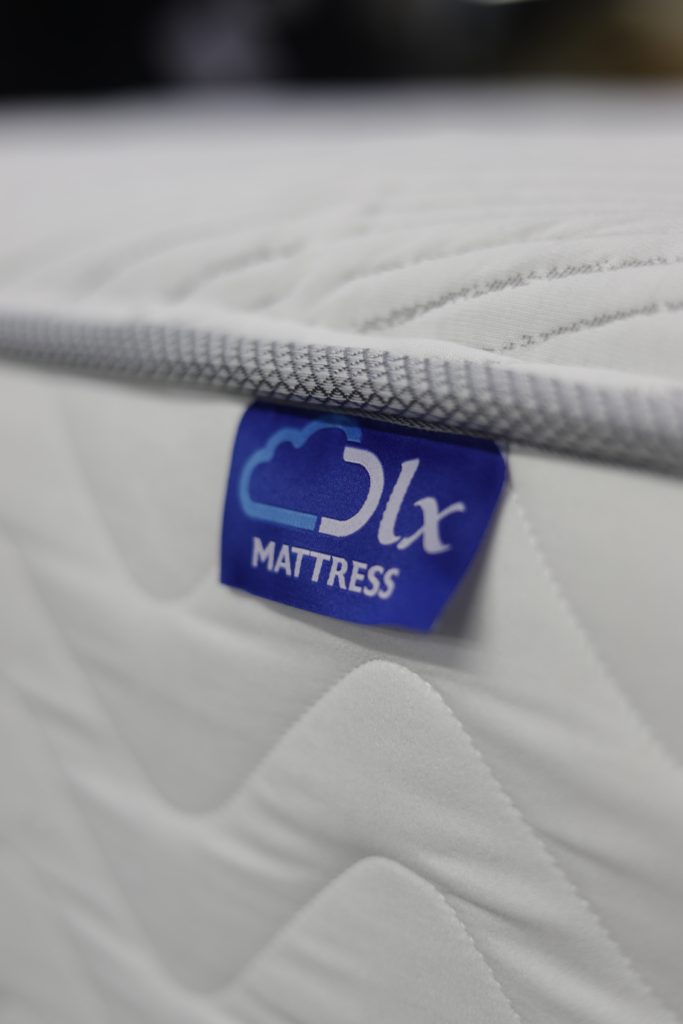
Motion Transfer and Noise
Motion Transfer in a Pillow Top Mattress
Pillow top mattresses are often praised for their ability to minimize motion transfer. The additional layer of padding on top of the mattress absorbs and dampens motion, preventing it from transferring across the mattress surface. This can be particularly beneficial for individuals sharing a bed, as it reduces disturbances caused by a partner’s movements during the night. Pillow top mattresses with memory foam or latex in the comfort layer tend to excel in isolating motion, as these materials are known for their ability to absorb and dissipate energy.
Motion Transfer in a Traditional Mattress
Traditional mattresses, specifically those with a significant amount of bounce or responsiveness, may be more prone to motion transfer compared to pillow top mattresses. The metal coils or springs in the support core can transmit movement across the mattress surface, potentially disturbing a sleeping partner. However, advancements in mattress technology have led to the development of innerspring mattresses with reduced motion transfer. Some traditional mattresses now incorporate individually pocketed coils, which work independently to minimize motion transfer and isolate movement.
Noise in a Pillow Top Mattress
Pillow top mattresses generally produce minimal noise during regular use. The additional layer of padding helps dampen any potential noise generated by the underlying support core, such as the movement of metal coils or springs. However, it is important to note that noise levels can vary depending on the specific construction and materials used in the mattress. Opting for a well-constructed pillow top mattress from a reputable brand can help ensure noise is kept to a minimum, providing a peaceful and quiet sleeping environment.
Noise in a Traditional Mattress
Traditional mattresses, particularly those with metal coils or springs in the support core, can produce some noise under certain conditions. The movement of the coils or springs can sometimes result in squeaking or creaking sounds, especially if the mattress is older or not properly maintained. While advancements in mattress technology have led to the development of noise-reducing features in some traditional mattresses, it is essential to consider the overall quality, age, and maintenance of the mattress to minimize the potential for noise disruption during sleep.
Price Range
Price Range of Pillow Top Mattresses
The price range of pillow top mattresses can vary widely depending on several factors, including the brand, materials used, size, and overall quality. Entry-level pillow top mattresses can typically be found in the range of $500 to $1,000. Mid-range options may range from $1,000 to $2,500, while premium pillow top mattresses can go upwards of $2,500 or more. It is important to consider the value provided by the mattress in terms of comfort, durability, and features when determining the most suitable price range for individual needs and preferences.
Price Range of Traditional Mattresses
Traditional mattresses generally offer a wide range of price options to suit various budgets. Entry-level traditional mattresses can typically be found in the range of $300 to $800. Mid-range options may range from $800 to $1,500, while high-end traditional mattresses can exceed $1,500 or more. The price of a traditional mattress can be influenced by factors such as the type and thickness of the metal coils, the quality of upholstery materials, and additional features like edge support or cooling technology. It is essential to consider the desired level of comfort, support, and durability when selecting a traditional mattress within a specific price range.
Factors Influencing Price
Several factors can influence the price of both pillow top and traditional mattresses. The type and quality of materials used, such as memory foam, latex, or high-density coils, can significantly impact the cost. The thickness and construction of the comfort and support layers also play a role in determining the price. Additional features, such as cooling technology, edge support, or adjustable firmness settings, can contribute to a higher price point. Brand reputation and the level of customer service provided by the manufacturer may also influence the cost of the mattress. It is important to carefully consider individual preferences, needs, and budget when comparing prices and selecting the right mattress.
Maintenance and Care
Maintenance of a Pillow Top Mattress
Proper maintenance and care can help extend the lifespan of a pillow top mattress. Some general maintenance practices include regularly rotating the mattress to evenly distribute wear and compression. Vacuuming the mattress surface periodically can help remove dust and debris. It is also advisable to use a mattress protector to protect against spills, stains, and allergens. In case of spills, blotting the affected area with a clean cloth and using a mild detergent solution for spot cleaning is recommended. Following the manufacturer’s care instructions for your specific pillow top mattress is crucial to maintain its integrity and warranty coverage.
Maintenance of a Traditional Mattress
Maintaining a traditional mattress primarily involves ensuring that the support core remains in good condition. Regularly rotating the mattress can help distribute wear and prevent sagging in specific areas. It is important to avoid bending or folding the mattress, as this can damage the coils and affect the overall support. Using a mattress protector can help protect against spills, stains, and allergens, and maintaining proper hygiene can also contribute to a longer mattress lifespan. Following the manufacturer’s care instructions, including any specific recommendations for the support core, is essential for maintaining the integrity of a traditional mattress.
Cleaning a Pillow Top Mattress
Cleaning a pillow top mattress requires a gentle and careful approach to prevent damage to the materials. If the mattress cover is removable and machine washable, following the manufacturer’s instructions for washing and drying is recommended. For spot cleaning, using a mild detergent solution and gently blotting the area is advisable. It is important to allow the mattress to completely dry before replacing any bedding or using the mattress again. Regularly vacuuming the mattress surface using a brush attachment can help remove dust and allergens.
Cleaning a Traditional Mattress
Cleaning a traditional mattress primarily involves cleaning the surface and maintaining general hygiene. Vacuuming the mattress surface using a brush attachment can help remove dust and allergens. Spot cleaning any spills or stains with a mild detergent solution and blotting the area is recommended. It is important to avoid excessive moisture and allow the mattress to dry completely before placing any bedding or using the mattress again. Using a mattress protector can help protect against spills and stains, making cleaning and maintenance easier. Following the manufacturer’s care instructions will provide specific guidance for cleaning a traditional mattress and maintaining its condition.
Who Should Choose a Pillow Top Mattress?
Sleepers Seeking Extra Cushioning
If you prefer a luxurious and plush sleeping surface with additional cushioning, a pillow top mattress could be the perfect choice for you. The extra layer of padding offers enhanced comfort and can cradle the body, providing a cozy and cocoon-like feeling. Pillow top mattresses are often favored by individuals who like to sink into their mattress and enjoy enveloping support.
Sleepers With Specific Health Conditions
Pillow top mattresses can be a suitable option for individuals with specific health conditions or sensitivities. The additional cushioning provided by the pillow top layer can help alleviate pressure points and provide targeted support, making it beneficial for individuals with joint pain or arthritis. The contouring properties of materials like memory foam or latex can also contribute to better spinal alignment, making pillow top mattresses a potential choice for those with back or neck issues.
Side and Back Sleepers
Side and back sleepers, who often benefit from greater pressure relief and contouring, may find pillow top mattresses particularly comfortable. The plush surface helps cushion the hips and shoulders, which are common areas of pressure for these sleeping positions. The ability of the pillow top layer to conform to the body’s shape can offer enhanced support and align the spine, promoting better sleep posture.
Lighter-weight Sleepers
Lighter-weight sleepers may find pillow top mattresses especially comfortable due to the gentle cradling and contouring provided by the extra layer of padding. The plushness of the pillow top can create a cozy and supportive sleeping environment, helping to minimize pressure points and ensure proper spinal alignment. Lighter-weight sleepers may also appreciate the added softness and cushioning, making it easier to find a comfortable sleeping position.
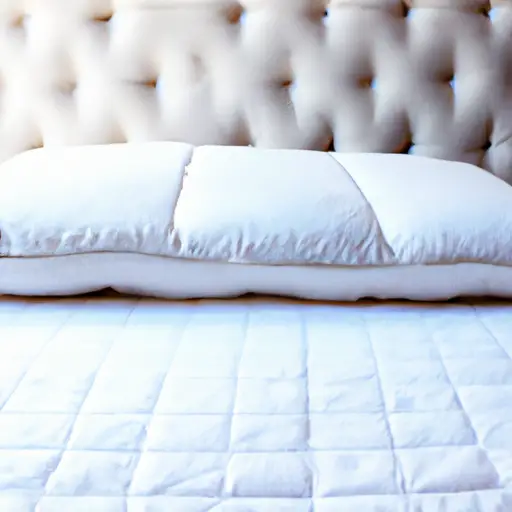
Who Should Choose a Traditional Mattress?
Sleepers Seeking Firmness
If you prefer a firmer sleeping surface or require additional support for proper spinal alignment, a traditional mattress may be a better choice for you. Traditional mattresses offer a range of firmness options, allowing you to select a level of comfort that suits your needs. The metal coils or springs in the support core of a traditional mattress provide a firm and supportive foundation, ideal for individuals who prefer a more substantial sleeping experience.
Sleepers Who Prefer a Classic Feel
For sleepers who prefer a more traditional and familiar sleeping experience, a traditional mattress can provide the desired comfort and familiarity. The bounce and responsiveness of the metal coils or springs in an innerspring mattress can create a classic feel that many individuals appreciate. Additionally, traditional mattresses often have a wider range of firmness options, allowing you to select the level of comfort that best aligns with your preferences.
Stomach Sleepers
Stomach sleepers typically require a firmer sleeping surface to help maintain proper spinal alignment and prevent sinking of the hips. Traditional mattresses, particularly those with a firmer comfort level or sturdier support core, can offer the necessary support and stability for stomach sleepers. The metal coils or springs in the support core provide a firm foundation that helps distribute body weight evenly, reducing the risk of developing back pain or discomfort.
Heavier-weight Sleepers
Heavier-weight sleepers often require a mattress with additional support and resilience to accommodate their weight. Traditional mattresses, particularly those with thicker gauge coils or firm support cores, can offer the necessary support to prevent excessive sinking and maintain proper spinal alignment. The durable and sturdy construction of traditional mattresses can better withstand the increased weight and provide the necessary support for heavier-weight sleepers.
Final Thoughts
Choosing between a pillow top mattress and a traditional mattress ultimately depends on individual preferences and specific needs. Pillow top mattresses offer plushness and enhanced cushioning, making them ideal for those who enjoy a luxurious and enveloping sleeping experience. They are particularly suitable for sleepers seeking extra comfort, experiencing specific health conditions, or favoring side and back sleeping positions. On the other hand, traditional mattresses provide a wide range of firmness options and a classic feel that may appeal to sleepers who prefer a firmer sleeping surface, have specific support needs, or sleep on their stomachs. It is important to carefully consider factors such as comfort, support, durability, and budget when making a decision. By understanding the characteristics, pros, and cons of both pillow top and traditional mattresses, you can choose the one that is right for you and ensure a restful and rejuvenating sleep experience.
